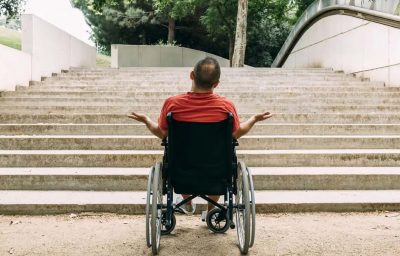
A team of experts in disability employment summarized advances in outcomes in individuals recovering from spinal cord injury. Their article, “30 Years after the Americans with Disabilities Act: Perspectives on employment for persons with spinal cord injury,” was published in Physical Medicine and Rehabilitation Clinics of North America.
Thirty years after the ADA passage, planning for a return to work is often a low priority during rehabilitation for spinal cord injury, and employment rates remain low for this population. The authors report their analysis based on the Medical Expenditure Panel Survey, comparing the characteristics of working-age people with spinal cord injury/dysfunction, and their experiences with employment and health care, with those of the overall working-age population. Despite the positive impact of jobs on many domains, workers with SCI/D experience significantly more issues related to health and medical care, according to John O’Neill, PhD, director of the Center for Employment and Disability Research at Kessler Foundation.
New vocational rehabilitation models that address these issues are returning more people to the workplace after spinal cord injury. “Compared with traditional vocational rehabilitation, the comprehensive services offered through individual placement and support (IPS) are helping more people achieve competitive employment,” said Dr. O’Neill. “Integrating vocational services into spinal cord injury rehabilitation enlists the talents of the treatment team in the fulfillment of the individual’s employment goals.”
Another promising approach is vocational resource facilitation (VRF), an early intervention model implemented at Kessler Institute for Rehabilitation with funding from the Craig H. Neilsen Foundation. A dedicated vocational resource facilitator works with the treatment team to support newly injured individuals with their plans to return to work, coordinate services, and provide follow-up after discharge. Since this publication, the employment rate at one year after release for traumatic spinal cord injury has increased from 34% to 43%, significantly exceeding national one-year post-injury benchmarks ranging from 12% to 21%.”
When delivered soon after injury and integrated into the medical rehabilitation plan, the authors emphasize that vocational rehabilitation services contribute to better employment outcomes. “Implementing evidence-based practices during rehabilitation is an important step toward fulfilling the promises of the ADA for people with spinal cord injury,” Dr. O’Neill concluded.








